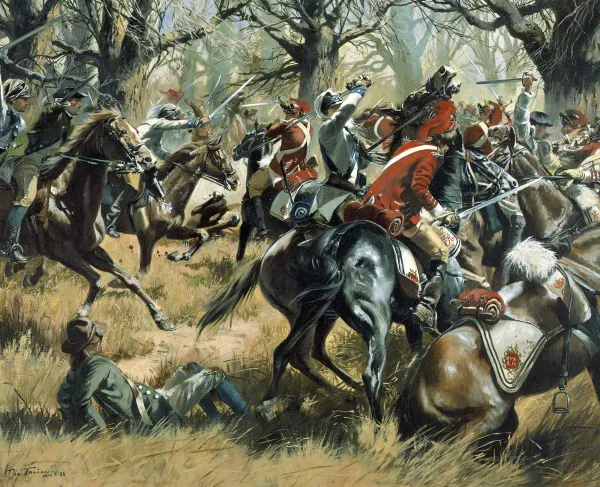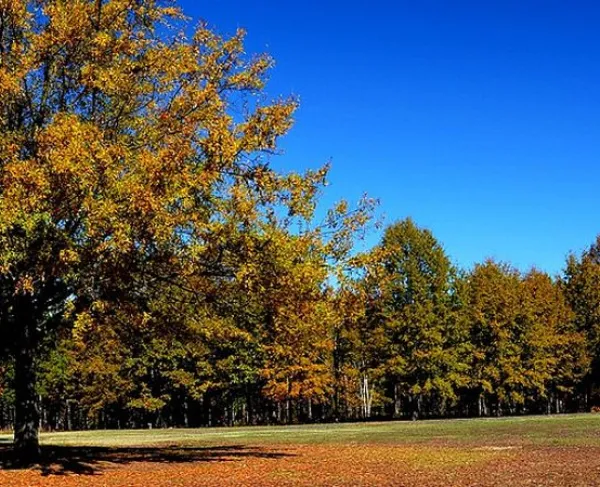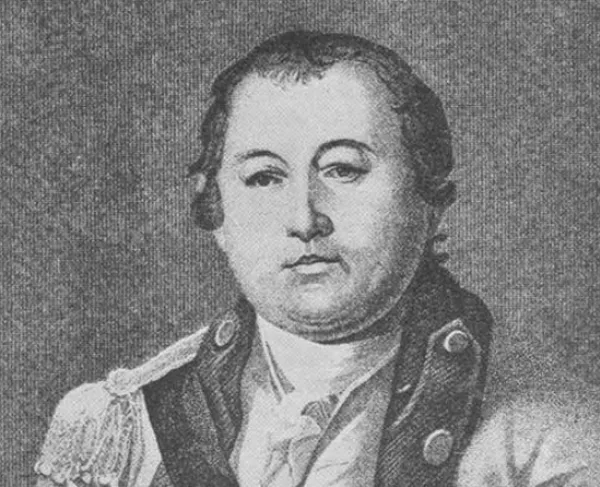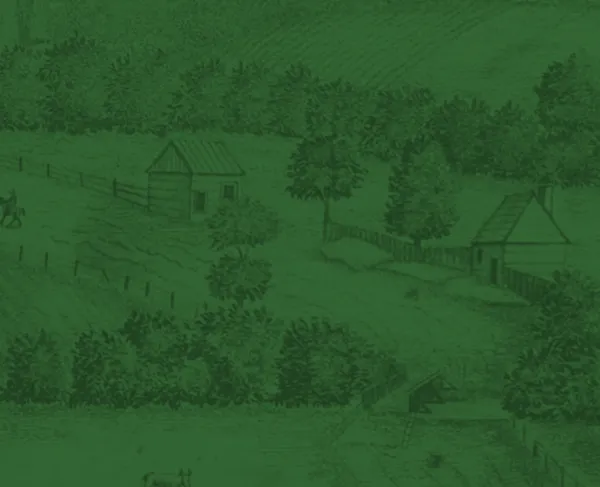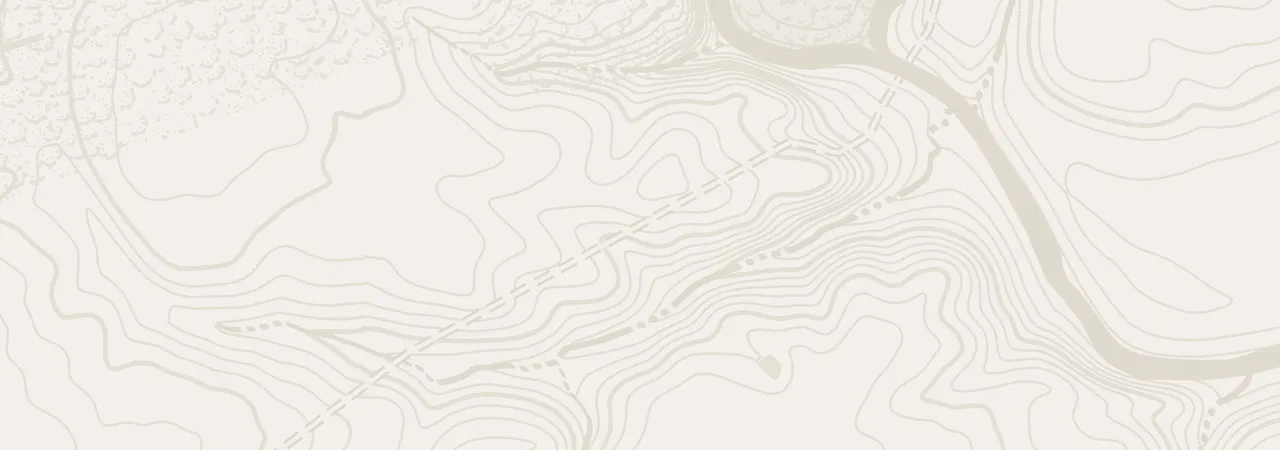
Hammond's Store
South Carolina
Laurens County, South Carolina | Dec 30, 1780
On Christmas Day 1780, Patriot Brigadier General Daniel Morgan encamped on the Pacolet River at Grindal Shoals, South Carolina, the plantation of a captured Tory. Morgan received intelligence that Lieutenant Colonel Thomas Waters had assembled a force of about 250 Georgian Tories at Fair Forest. These loyalists were disrupting and plundering settlements of patriot families between the backcountry villages of Winnsborough and Ninety Six. Though accounts differ if Waters or some other commander was present with these partisan forces, Morgan, with Major General Nathanael Greene’s encouragement, sought to disrupt this plundering. Morgan dispatched Lieutenant Colonel William Washington's dragoons and mounted militia to harass and destroy these loyalists. Washington, a Virginian and the second cousin of George Washington, had shown himself a capable field officer at the head of cavalry in the Northern theatre. He had recently arrived to the area and quickly found himself in the middle of bloody civil war, witnessing “The Distress of the Women and Children stripp’d of every thing by plundering Villains cries aloud for redress.”
The Tory forces fell back about twenty miles when learning of Washington’s advance. By this point, Washington’s dragoons had entered country many miles behind enemy lines. On December 30, Washington’s seventy-five 3rd Continental Light dragoons, a handful of 1st Continental Light dragoons, and two hundred South Carolina mounted state troops came upon the two hundred and sixty Tory partisan unit along the road leading to Hammond's Store, about 25 miles from the British post at Ninety Six.
Washington placed militia riflemen on his flanks before directing the charge into the heart of the encampment. Crossing a stream (Bush River), Thomas Young, a patriot less than three weeks from his seventeenth birthday serving in Col. Thomas Brandon’s Fairforest Regiment, wrote years later, "When we came in sight, we perceived that the Tories had formed in a line on the brow of the hill opposite to us. We had a long hill to descend and another to rise. Col. Washington and his dragoons gave a shout, drew swords, and charged down the hill like madmen. The Tories flew in every direction without firing a gun. We took great many prisoners and killed a few." The Americans chased the unnerved Tory forces for seven miles.
The assembled loyalist force saw more than 100 men killed or wounded. The patriots took 40 prisoners and captured 50 horses, without a single loss. The cruelty the American cavalry force inflicted during the brief battle has been called a massacre by some. Others point to the inexperience of many of Washington’s men, compounded by the fact that many sought vengeance for the harsh treatment inflicted on settlers by loyalist raiding parties. Young wrote of an incident during the fighting, “In Washington’s corps there was a boy of 14 or 15, a mere lad who in crossing Tiger River was bucked by a blunder of his horse. The men laughed and jeered at him very much, at which he got very mad, and swore that boy or no boy, he would kill a man that day or die. He accomplished the former, I remember very well being highly amused at the little fellow charging round a crib after a Tory, cutting and slashing away with his puny arm, till he brought him down.”
Some loyalists escaped to a small fort on Williams’ plantation, the British post northwest of Ninety Six to which they had been retreating. The next day, Washington detached the Little River Regiment mounted troops under Colonel Joseph Hayes and a small Continental Light Dragoons detachment under Cornet James Simons to flush out Loyalist Brigadier General Robert Cunningham and Major Patrick Cunningham occupying Williams’ fort, a wooden palisaded farmhouse. Cunningham’s men chose to abandon the fort and slipped away. With two quick victories against partisan forces, Washington’s men returned to Morgan’s camp. News of their exploits reached both Lt. Col. Banastre Tarleton and Gen. Cornwallis, the latter was said to be appalled by the barbarity shown at Hammond’s Store. For his part, Tarleton assembled his force and went off in pursuit of Morgan. These movements would culminate in the decisive American victory at Cowpens on January 17, 1781.
While the cavalry charge at Hammond’s Store might seem inconsequential, it was revered by Daniel Morgan for having been a successful operation without the loss of a single American soldier. Because of this fact, along with the string of victories by Col. William Washington’s light dragoons, whatever complaints of brutality towards the scattered loyalists were soon forgotten and remain a footnote in the greater picture of the campaign that lead to Daniel Morgan’s victory at Cowpens. Today, the site of Hammond’s Store along the Bush River south of Clinton, South Carolina is no longer visible to passersby. However, it is yet another example of how a small military operation laid the foundation for what would become a major battle of the American Revolution.
Hammond's Store: Featured Resources
All battles of the Southern Theater 1780 - 1783 Campaign
Related Battles
280
260
0
150
